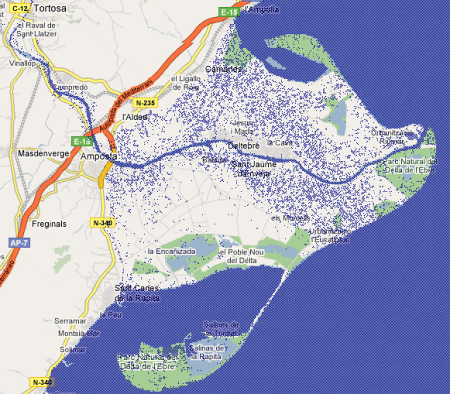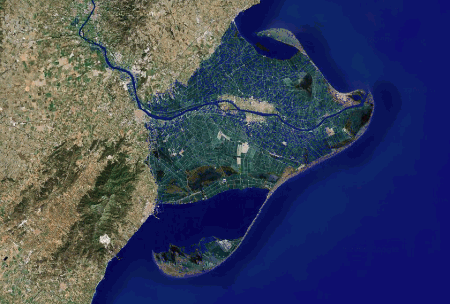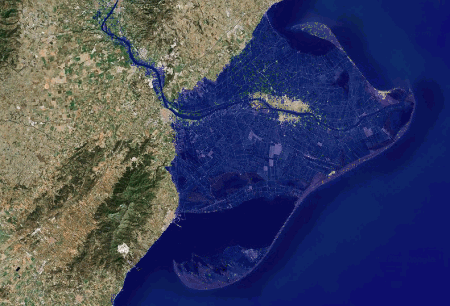Impact of rising sea levels on the Ebro Delta in Spain
If seas rise as little as one metre this century, as forecast in some scientific models, this will have a dramatic impact upon the Ebro Delta in Spain.
A sea level rise of one metre will lead to the almost total loss of the Ebro delta. Half of the Delta has already sunk to the height of sea level, shown by the blue dotted areas in the first of the maps below.
The Delta loses five millimetres in height each year, (three millimetres due to compaction and two by the rise of the level of the sea through recent global warming). The consequence is the immediate entrance of salt water through the subsoil by the hydrostatic pressure exerted by sea water. In addition, salt water will penetrate further up the river beyond Tortosa, with increasing salinisation of the subsoil leading to reduced crop yields. When the wedge of marine water in the river estuary remains a long time, the water of the river rots. Salt water, that is located in the lower level, does not mix with the better oxygenated fresh water above and the accumulation of organic matter that this causes leads to the consumption of oxygen and that the water ends up rotting. The lower the volume of the river, the greater the phenomenon of rotten water. In the past, there was a thriving fishing industry in the river estuary. Today, however, it is fished very little, because most of the water lacks oxygen.
 |
| Half of the Ebro Delta has sunk to the height of sea level, shown by the blue dotted areas above |
 |
| Ebro Delta Satellite Image 2007 |
 |
| Ebro Delta with simulated 1 metre rise in sea level |
Extreme weather changes the Ebro Delta
Llobregat Delta - Impact of Rising Sea Levels
Source: http://flood.firetree.net
